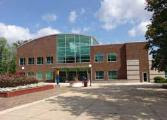One of the most frequently prescribed class of drugs in the United States are the drugs commonly known as beta blockers. They are prescribed for a great variety of conditions that are approved by the FDA and are used "off label" for any number of other conditions.
Some common beta blockers that you may see on your client's medication list include: propranolol (Inderal), metoprolol (Lopressor) and atenolol (Tenormin).
The drugs block the effects of the Sympathetic Nervous System (SNS) by stopping the effect of epinephrine/norepinephrine at the beta receptors in the heart and sometimes also in the lungs and adrenal glands. The SNS is part of the Autonomic Nervous System that regulates the functions of our bodies in response to internal and external factors. The SNS is the branch that stimulates the body to action and when overstimulated is the source of stress effects on the body. By blocking the effects of the SNS at the receptor sites the drugs decrease blood pressure, decrease the force of heart contractions, slow electrical impulse conduction through the heart, decrease heart output and oxygen demand. In those that affect the lungs, constriction of the broncioles can occur.
Side effects that are related to the blocking of the SNS include fatigue, sleepiness, low blood pressure, slow heart rate, fainting, fluid retention, wheezing, irregular heartbeat, edema, Raynaud's syndrome, gas, and nausea and vomiting.
Beta blockers are generally used to treat high blood pressure, irregular heart rhythms and long-term prevention of angina (chest pain) and heart attack. They are also used for such diverse conditions as migraines, anxiety, essential tremors, glaucoma, PMS and perimenopausal symptoms.
As a massage therapist recognize that the body may relax more quickly and deeply for the client taking these meds and that gentle stimulation at the end of the massage may be needed. A drop in blood pressure can also occur with massage, so care in getting the client on and off the table is needed. Other changes to how massage is applied may be required related to the client condition, severity of cardiac disease etc.
References: http://www.mayoclinic.com/health/beta-blockers/HI00059 , http://www.medicinenet.com/beta_blockers/article.htm
Jean Wible, RN, BSN, LMT, NCTMB, HTCP Author of "Pharmacology for Massage Therapy" and "Drug Handbook for Massage Therapists"
Action Required: Continue Receiving Updates from Dr. Fuhrman
-
The use of this site, DiseaseProof.com, as the official blog of Joel
Fuhrman, MD and as a source for news and articles from Dr. Fuhrman has been
disconti...
9 years ago









